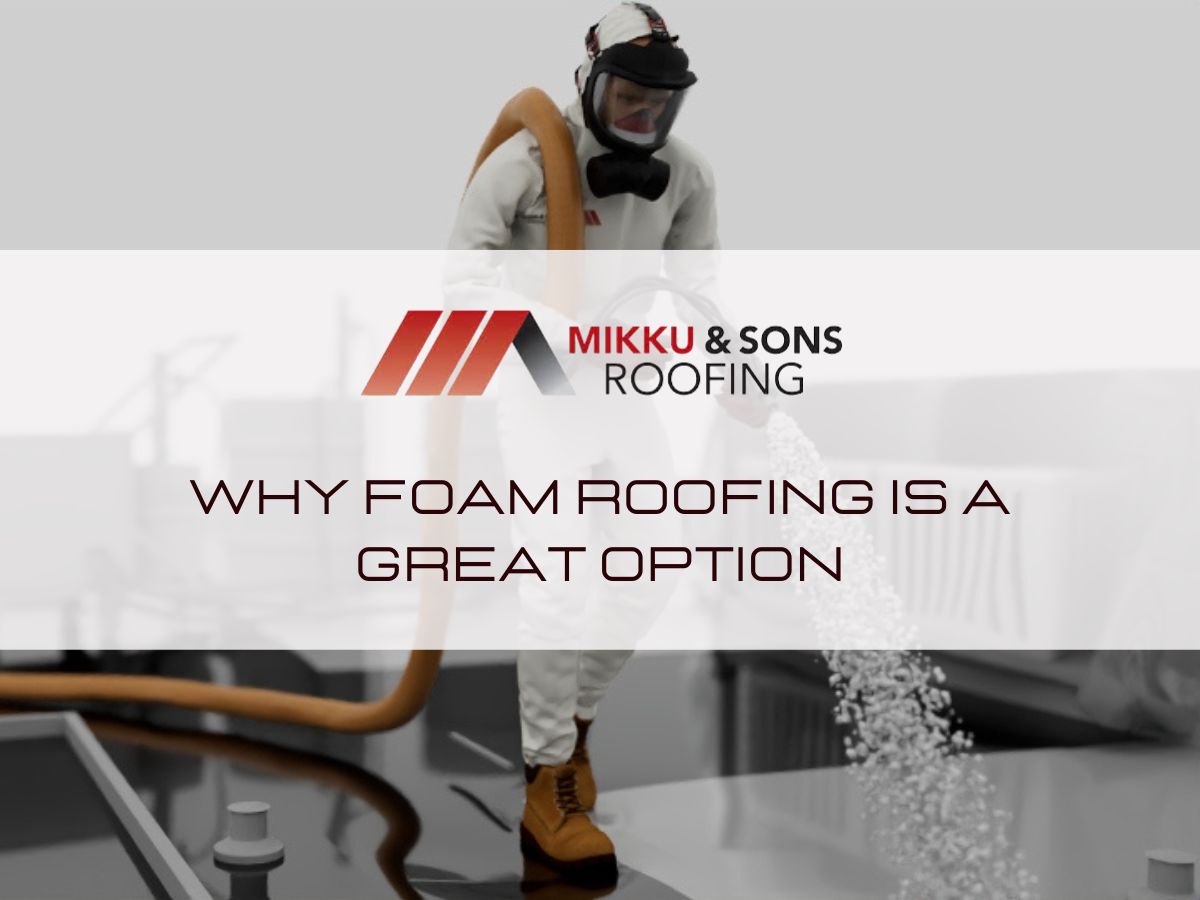

Spray foam roofing (SPF) is an excellent choice for a flat roof because of its insulation properties and seamlessness.
It has a long lifespan if it's been installed correctly, which takes skill and special equipment for the project. Throw your favorite coffee pod into your coffee maker and learn about foam roofs.
Mistakes to Avoid in SPF Installation
Spray foam roofing sounds easy enough. Two ingredients are mixed using special equipment attached to a truck or trailer. A chemical reaction starts as soon as the ingredients are mixed together.
Heated hoses bring the mixture forward to a spray gun, which is used to apply the foam to the roof with a thickness of 1 to 2 inches. The liquid then foams, expands, and hardens.
An elastomeric coating is applied to protect the foam from UV rays.
This installation takes skill and experience. The equipment is too specialized for a one-off job. Only an experienced pro will be able to mix the components correctly, at the right temperature, and apply the liquid properly while anticipating how much the foam will expand.
This is a widely recognized and highly effective building envelope material, with roofing systems being one of the main application categories.
A high-performance product with a lot of incredible benefits, spray foam has gained popularity with builders and roofing contractors.
Like a lot of building products, installation should always be performed by a professional, experienced installer utilizing correct handling and installation techniques, with safety precautions employed and followed.
The foam serves dual purposes as a protective roofing material and as a thermal insulation solution. A roof’s main purpose is to protect what is underneath it. SPF roofing systems provide durable protection for the structure and personal items contained below.
It's lightweight, as most SPF roof systems, weigh less than a pound per square foot. Its also seamless and self-flashing, and highly resistant to severe weather, wind, and foot traffic.
Once installed, it requires minimal maintenance, providing more strength to the roofing system. It works well in most of the country’s geographic regions and climates.
It also works well as both an air and moisture barrier. Not only does it protect against water and moisture intrusion, but it also reduces air movement through the roof system, which improves indoor air quality and lowers the energy use of the building.
Because the roof of a building is a big source of heat loss, the insulating qualities of the SPF help to provide excellent indoor temperatures and energy efficiency. As a thermal insulator, it has one of the highest R-values per inch of all roofing insulations.
And, because spray foam has fully adhered to, there are no thermal intrusions from fasteners. Keeping heat inside the property during colder months and keeping heat out in warmer months.
It reduces heating and air conditioning demands, which lowers energy expenses during its lifespan, which can be 30 to 50 years with the right maintenance. In warmer areas, reflective roof coatings can also be added over the SPF to further reduce cooling expenses.
Roof performance isn’t measured by just one factor (like R-value). Rather, the success of a roofing system is accomplished by reviewing combined considerations for air movement, moisture control, health, safety, durability, occupant comfort, and energy efficiency. An SPF roof scores high marks in all of these categories.
Watch out for the myths of foam roofing and makes sure that you are getting your roof maintained!
